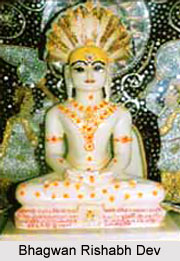 Shri Laj Teerth located in Rajasthan is a Jain pilgrimage centre. The teerth kshetra is situated in the center of Laj village. The temple is dedicated Bhagwan Rishabh Dev, the first Jain Tirthankara.
Shri Laj Teerth located in Rajasthan is a Jain pilgrimage centre. The teerth kshetra is situated in the center of Laj village. The temple is dedicated Bhagwan Rishabh Dev, the first Jain Tirthankara.
History of Shri Laj Teerth
As per the history Shri Laj Teerth dates back to the ancient times. An inscription can be seen on the pillar of the temple that was carved on the sixth day of the bright half of the month of Magha in the year 1244 of the Vikram Samvat Era. According to the inscription the teerth belongs to the twelfth century. Since the construction of the temple it was repaired and renovated several times. The last renovation of the temple took place in the year 1977 of the Vikram Samvat Era. Apart from the main deity the idol of Lord Parshvanatha was also installed in the temple by the auspicious hands of the revered Acharya Mahindrasurisvarji. The idol of Bhagwan Rishabh Dev is believed to possess miraculous powers. Many devotees from different places visit the temple to offer their prayers. It is believed that if prayed with all devotion the Lord fulfils the wishes of the pilgrims.
Temple of Shri Laj Teerth
The temple of Shri Laj Teerth houses the idol of Bhagwan Rishabh Dev. The Swetambara temple has been adorned with intricate artistic designs. The creative temple stands as a unique specimen of ancient art and paintings. The walls and pillars of the temple are also well decorated and enhance the beauty of the temple. The idol of the Lord is 55 cm in height and is white in colour. It is seated in a padmasana posture. The idol has been beautifully carved from a single stone and looks very appealing. The smiling face of the Lord looks very calm and serene.
The Temple of Sri Laj Teerth organizes many annual gatherings and functions. There are provisions for dharamshalas or rest houses for the pilgrims. These are well equipped with all modern facilities. Apart from this there are Upashrays, an Ayambilshala and a Jnanabhandar. The teerth is located in the midst of beautiful natural surroundings. The calm and peaceful atmosphere and the surrounding greenery make this teerth a suitable place for religious activities. The scenic beauty of this place also mesmerizes and fascinates the pilgrims. The kshetra is well connected to road, rail and air. Taxi services and bus services are easily available here. The nearest railway station is located at Sirohi that is at distance of 11 kilometers.




















